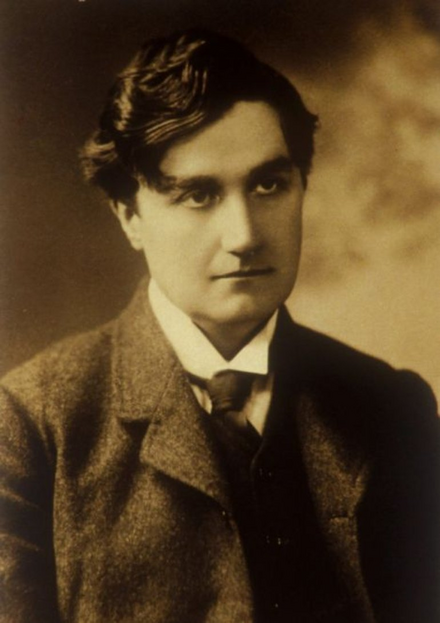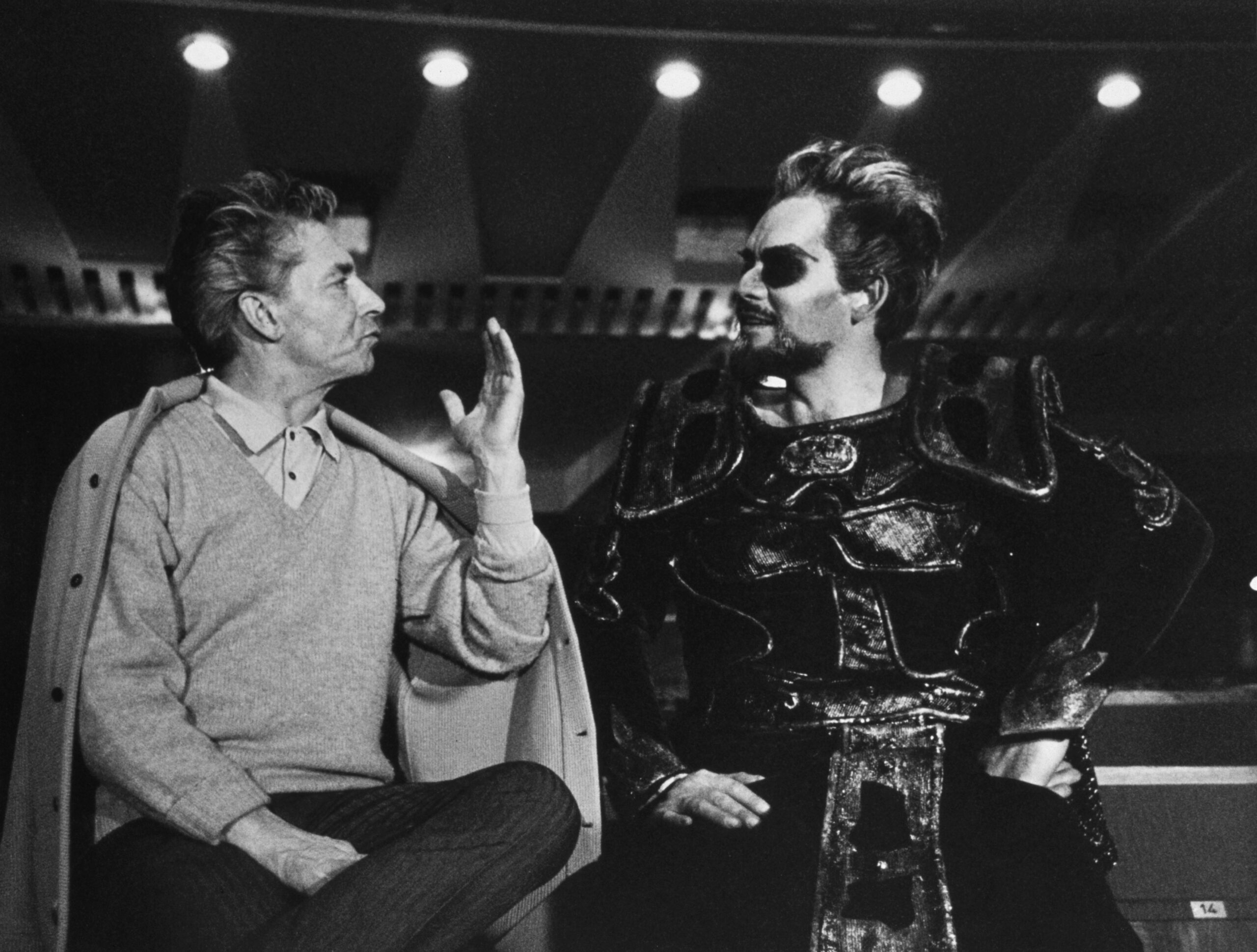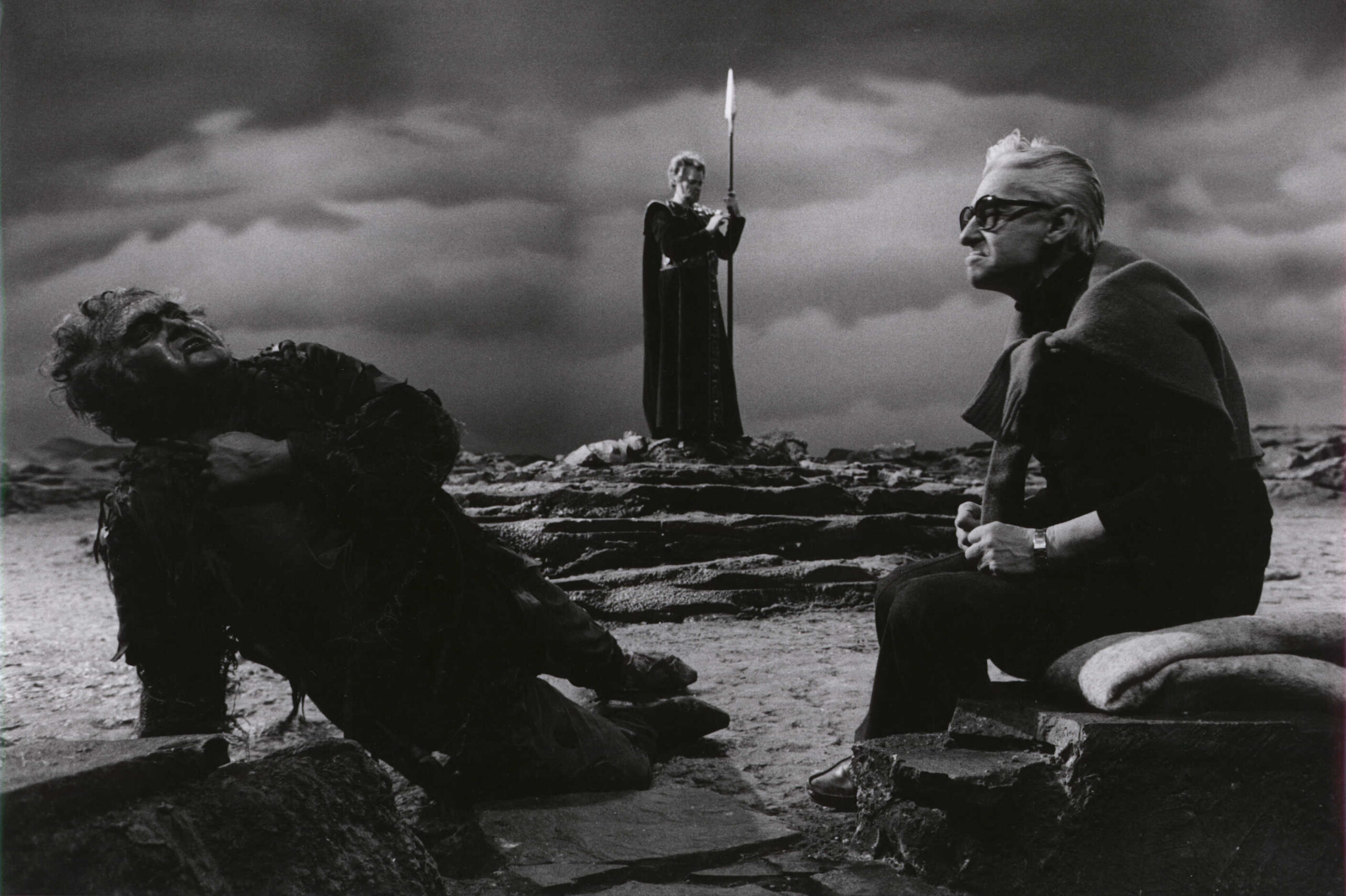31 May 2024
P.R. Jenkins
Karajan artists: Astrid Varnay – “the burning torch”

Four broadcast recordings, nine performances – Karajan and Astrid Varnay didn’t do all that much together but the Swedish-Hungarian diva with the American passport was prominently cast in significant Karajan productions.
His Brünnhilde in the studio recording, Régine Crespin, called Varnay “la torche brûlante (the burning torch)”. Having conducted two enthusiastically received “Meistersinger” performances Karajan continued his first season in Bayreuth in 1951 with a complete “Ring” featuring Varnay as Brünnhilde throughout the cycle. Varnay was 33 years old but had already been a member of the Metropolitan Opera for 10 years. Her friend Kirstin Flagstad, who had refused to come to Bayreuth once again, had recommended Varnay, so she gave her Bayreuth debut without an audition! Varnay was destined to become one of the stars of “New Bayreuth” for many years but at her first appearance she was rather unhappy with Karajan’s beat: “His odd beat and its consequences for the performance brought me in a conflict with him that unfortunately cast a shadow on our relationship for quite a long time.” Varnay obviously complained to the “Wagner brothers” Wolfgang and Wieland, a circumstance that was unacceptable for Karajan. Despite the quarrels backstage, there was some wonderful music making. Peter Uehling praised the live recording of the 3rd act of “The Valkyrie”: “Karajan manages to form the (often) lengthy dialogue between Wotan and Brünnhilde after the exit of the Valkyries very convincingly. It is more vivid than in the studio recording. Astrid Varnay and Sigurd Björling could hardly wait to intervene.”
And about “Siegfried”:
“In ‘Siegfried’ the conductor proves impressively what he is able to achieve. Parts that are normaly not very gripping appear thrilling and clear under his baton. The last half-hour of ‘Siegfried’ is a dialogue between Siegfried and Brünnhilde. He is importuning, she is hesitating. In many interpretations this back and forth seems unnecessarily awkward and lengthy. Karajan and his singers Astrid Varnay and Bernd Aldenhoff turn it into a touching scene of extraordinary expressiveness.”
Thirteen years later, it was Walter Legge who persuaded Karajan to forget about the Bayreuth quarrels and cast Varnay for the title-role in his Salzburg “Elektra”. In that summer 1964, Karajan had recently resigned from his position as manager of the Vienna State Opera and joined the directorate of the Salzburg Festival. He was so satisfied with Varnay’s performance in what might be called his favourite opera that he sent her a contract for the following season even before the premiere had happened. Varnay was delighted and flattered. The three performances of “Elektra” in 1965 were their last collaboration.
Karajan as a pilot has already been the subject of a number of anecdotes. Astrid Varnay adds another one talking about her “green-faced” colleague Hildegard Hillebrecht (suitably, in this Karajan production she was Elektra’s afflicted sister Chrysothemis).
INTERVIEWER: You sang under Karajan’s baton in Salzburg. What was your impression of Karajan?
VARNAY: Very good. We had a lot of fun.
INTERVIEWER: Right.
VARNAY: No, really! Apart from orchestral and musical things it is very nice with Karajan because you can try everything at the rehearsal and afterwards, in the performance, he is a real partner. His favourite character was Klytämnestra. He acted out the part for Martha Mödl. Every day. She had a big stick and she was supposed to fall and then pull herself up on this stick. And he showed her how to do it. Every time. We found this surprising until we realised he would have loved to hand the orchestra over to us and play Klytämnestra himself.
INTERVIEWER: I have often heard that he wanted to direct and do other things and he is a good pilot but I’ve never heard this before.
VARNAY: A good pilot…? Frau Hillebrecht can tell you all about that. We had a flight with him because Frau Hillebrecht had an appointment in Munich and he wanted to continue the rehearsal [in Salzburg]. Frau Hillebrecht’s husband, Herr Stöhr, said: No, she has to be in Munich at a certain time. We have a job to do there. Karajan remembered that he was obliged to execute a number of flying hours every month so as not to lose his licence and he said: “I’ll fly you over to Munich.” [distance about 70 miles] “But what shall we do with Frau Hillebrecht’s car?” “We’ll send Herr Stöhr on ahead.” Herr Stöhr was sent to Munich. Hours later, we took a car to the airport and Karajan flew in the company of a copilot. You know, I remember once in Bayreuth we entered his car. As you probably know, Bayreuth is up on a hill. Back then, I was still a bit vain and I opened my handbag to take out my mirror and before I could do so we were down the hill. It was the same thing with that plane. I’m not kidding, when we landed, there was no other plane at the airport. They said, Karajan is coming, get the other planes out of the way. That’s how it worked. He was very self-confident even in a plane. It was quite safe but it was an experience… Frau Hillebrecht was green in the face. We got into Herr Stöhr’s car and when he started, we heaved a sigh of relief. That’s the flying saga…!
INTERVIEWER: You never flew with him again?
VARNAY: No. If we’d had a performance after the flight, I would have done it because I guess he preferred a complete cast. But flying with him after a performance – never. By the way, he still flies. With a copilot.
— P.R. JenkinsPeter Uehling: “Karajan. Eine Biographie” Rowohlt, Reinbek bei Hamburg. 2006
Richard Osborne: “Karajan. A Life in Music” Chatto & Windus, London. 1998


